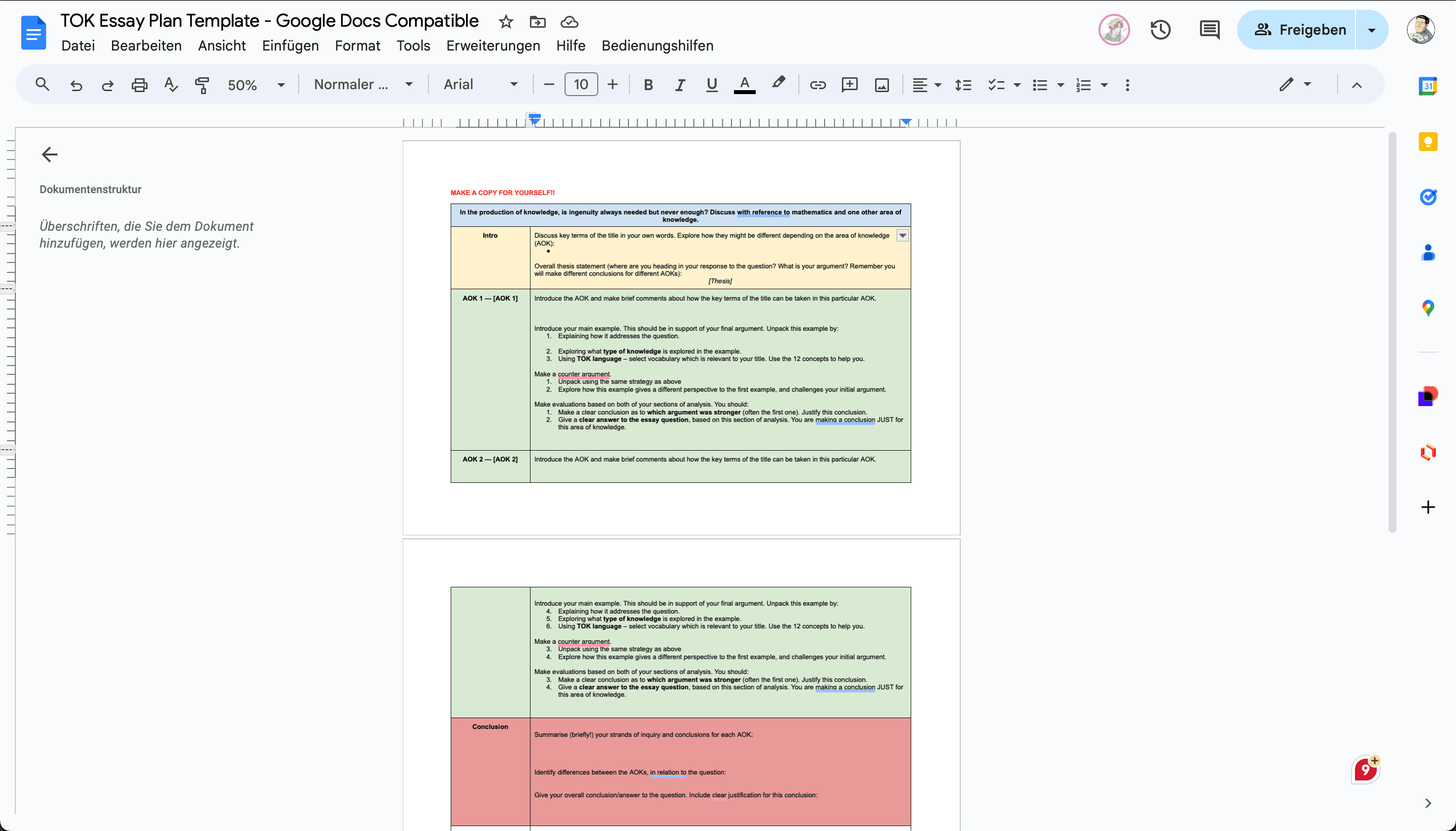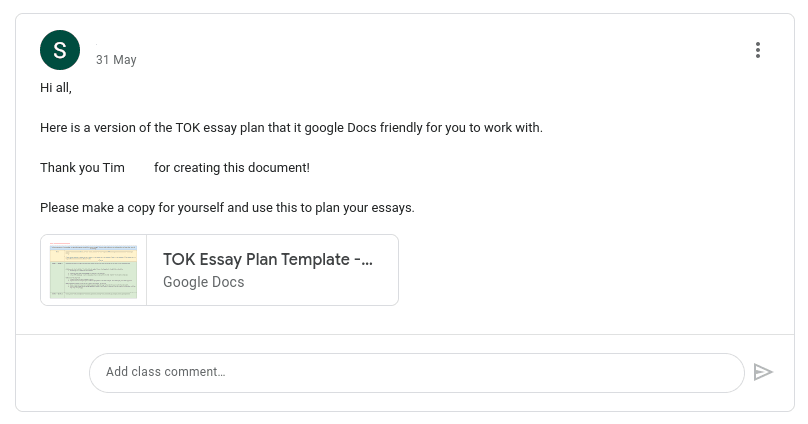Creating a Google-Docs Compatible TOK Essay Planning Document
Fri May 31 2024As the year group embarked on a practice TOK essay, we were first asked to complete a planning document. However, due to technological inconveniences and software incompatibilities, the original template provided by the instructor failed to successfully facilitate students' brainstorming of ideas.Focus and Aim
As the year group embarked on a practice TOK essay, we were first asked to complete a planning document. However, due to technological inconveniences and software incompatibilities, the original template provided by the instructor failed to successfully facilitate students' brainstorming of ideas.
Focus
Addressed Learning Outcomes:
- Demonstrate engagement with issues of global significance.
- Demonstrate how to initiate and plan a CAS experience
- Demonstrate the skills and recognize the benefits of working collaboratively.
- Recognize and consider the ethics of choices and actions.
CAS Hours
Action
The planning process involved identifying the key parts of the original template, finding the best software solution, and then doodling a prototype for the format of the document.
Creating the equivalent document on Google Docs in a much more user-friendly format. Then, communicate with the TOK coordinator to spread the usage of this document and help other students.
Evidence


Reflections
The original document created great difficulties for students to fill in the required information, as the format of word-documents failed to match that of Google Docs, partially. Not only has this been a challenge for myself, but also I would have imagined that other students were suffering from the same problem. Thus, I decided to use my familiarity with operations on Google Docs to create a much more convenient document that even coming years' students can use. This aligns with my ethical principles that, if possible, one should help the community as much as possible, especially if they are capable to. In the preparation stage, I first went through the original document to grasp an understanding of the structure and content-wise requirements. Then I suggested a rough layout to my colleagues and after their trial usage of the document, I made adjustments and ended up with the final version. This step was is as essential as it is in software engineering, where the product has to be consistently tested against user behavior. Hence, this acted as a reminder of the consequences of failure to involve and engage end-users, not only in the context of creating this Google Docs template, but also in the broader setting of the global IT industry.